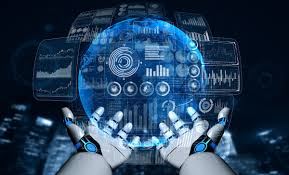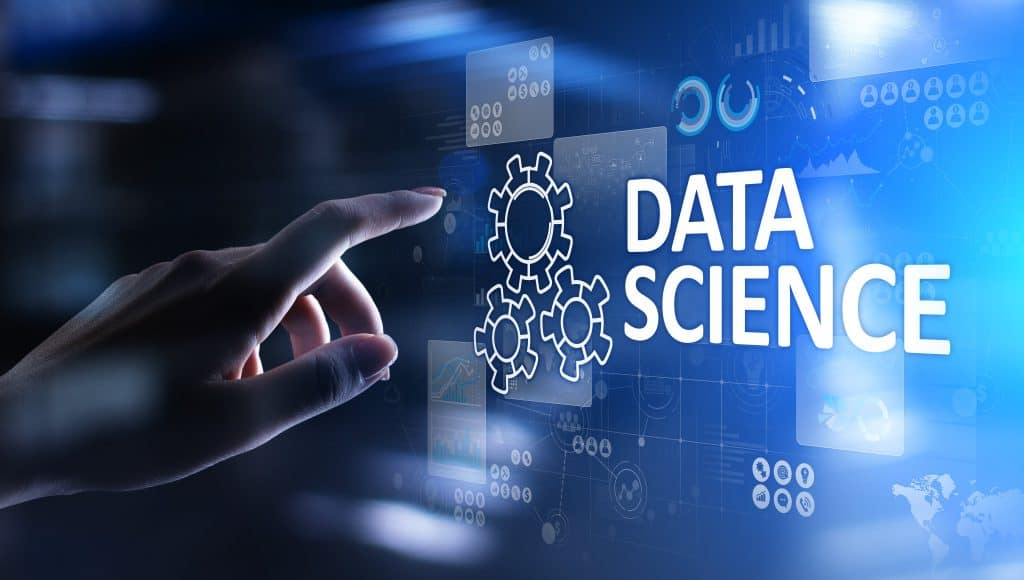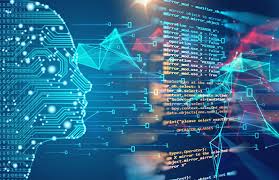Abstract
The convergence of mathematical optimization and machine learning represents a transformative force in modern industrial management. This comprehensive review examines the current state, applications, and future prospects of these technologies across key domains including production planning, supply chain optimization, predictive maintenance, and quality control. Through analysis of recent developments and case studies, we demonstrate how integrated mathematical and machine learning approaches are revolutionizing industrial operations, achieving significant improvements in efficiency, cost reduction, and competitive advantage. The paper identifies emerging trends, implementation challenges, and research opportunities that will shape the future of intelligent manufacturing systems.
1. Introduction
The industrial landscape is undergoing unprecedented transformation driven by the convergence of advanced mathematics, artificial intelligence, and data analytics. Modern manufacturing enterprises face complex challenges including global supply chain volatility, increasing quality demands, sustainability requirements, and the need for mass customization while maintaining cost competitiveness. Traditional management approaches, often based on experience and simple heuristics, are increasingly inadequate for addressing these multifaceted challenges.
Mathematics has long provided the theoretical foundation for industrial optimization through operations research, statistical analysis, and control theory. However, the explosion of data generated by modern industrial systems–estimated at 2.5 quintillion bytes daily across all industries–has created new opportunities for data-driven decision making through machine learning algorithms. The integration of mathematical rigor with machine learning’s pattern recognition capabilities offers unprecedented potential for optimizing complex industrial systems.
This convergence is particularly relevant in the context of Industry 4.0, where cyber-physical systems, Internet of Things (IoT) devices, and cloud computing enable real-time data collection and analysis. Manufacturing execution systems (MES), enterprise resource planning (ERP) platforms, and sensor networks generate continuous streams of operational data that can be leveraged for optimization and prediction. The challenge lies in transforming this data deluge into actionable insights that drive measurable business value.
The economic impact of these technologies is substantial. McKinsey estimates that artificial intelligence could contribute up to $13 trillion to global economic output by 2030, with manufacturing representing one of the largest application areas. Companies implementing advanced analytics and optimization report 10-20% improvements in operational efficiency, 15-25% reductions in inventory costs, and 20-50% decreases in equipment downtime.
2. Mathematical Foundations in Industrial Management
2.1 Operations Research and Optimization
Mathematical optimization has been the cornerstone of industrial management since the development of operations research during World War II. Linear programming, introduced by George Dantzig in the 1940s, provided the first systematic approach to resource allocation problems. Today, optimization techniques span a broad spectrum from simple linear models to complex stochastic and robust optimization frameworks.
Linear and Integer Programming Applications: Production scheduling represents one of the most successful applications of mathematical programming. The job shop scheduling problem, formulated as a mixed-integer linear program (MILP), determines optimal assignment of jobs to machines while minimizing makespan or tardiness. Modern implementations handle thousands of jobs and machines, considering setup times, sequence-dependent changeovers, and resource constraints.
Consider the mathematical formulation for a basic production scheduling problem:
Minimize: ∑∑ cᵢⱼxᵢⱼ
Subject to:
- ∑ xᵢⱼ = 1 (each job assigned to exactly one machine)
- ∑ pᵢⱼxᵢⱼ ≤ Cⱼ (capacity constraints)
- xᵢⱼ ∈ {0,1} (binary assignment variables)
Where xᵢⱼ represents the assignment of job i to machine j, cᵢⱼ is the cost of assignment, pᵢⱼ is processing time, and Cⱼ is machine capacity.
Stochastic Programming: Real-world industrial systems face significant uncertainty in demand, supply, equipment reliability, and market conditions. Stochastic programming addresses this uncertainty by incorporating probability distributions into optimization models. Two-stage stochastic programs, where first-stage decisions are made before uncertainty realization and second-stage decisions adapt to observed outcomes, are particularly valuable for capacity planning and inventory management.
Multi-objective Optimization: Industrial decisions rarely involve single objectives. Production managers must balance cost minimization with quality maximization, throughput enhancement, and environmental impact reduction. Multi-objective optimization techniques, including weighted sum methods, ε-constraint approaches, and evolutionary algorithms, help decision-makers understand trade-offs and identify Pareto-efficient solutions.
2.2 Statistical Process Control and Quality Management
Walter Shewhart’s pioneering work on statistical process control (SPC) established mathematical foundations for quality management. Control charts use statistical principles to distinguish between common cause and special cause variation, enabling proactive quality control. The mathematical basis relies on the central limit theorem and normal distribution properties.
For a process with mean μ and standard deviation σ, control limits are typically set at:
- Upper Control Limit (UCL) = μ + 3σ
- Lower Control Limit (LCL) = μ - 3σ
Modern SPC extensions include multivariate control charts using Hotelling’s T² statistic and CUSUM (cumulative sum) charts for detecting small process shifts. These methods provide mathematical rigor for quality control while enabling integration with machine learning algorithms for enhanced pattern recognition.
2.3 Supply Chain Optimization
Supply chain management involves complex networks of suppliers, manufacturers, distributors, and customers operating across multiple geographical regions and time zones. Mathematical models address facility location, transportation optimization, and inventory management across these networks.
Network Flow Models: Supply chain networks can be modeled as directed graphs where nodes represent facilities and arcs represent transportation links. The minimum cost flow problem determines optimal material flows while satisfying demand requirements and capacity constraints. Multi-commodity extensions handle multiple product types with different characteristics and requirements.
Inventory Optimization: The classic Economic Order Quantity (EOQ) model provides the mathematical foundation for inventory management:
EOQ = √(2DS/H)
Where D is annual demand, S is ordering cost, and H is holding cost per unit per year. Modern extensions include multi-echelon models that coordinate inventory decisions across supply chain stages and stochastic models that handle demand uncertainty.
3. Machine Learning Applications in Industrial Settings
3.1 Predictive Maintenance and Asset Management
Predictive maintenance represents one of the most successful applications of machine learning in industrial settings. Traditional maintenance approaches–reactive (fix when broken) and preventive (fix on schedule)–are being replaced by condition-based strategies that use machine learning to predict equipment failures before they occur.
Sensor Data Analytics: Modern industrial equipment is equipped with numerous sensors measuring vibration, temperature, pressure, current, voltage, and acoustic emissions. Machine learning algorithms analyze this high-dimensional, high-frequency data to identify patterns indicative of equipment degradation.
Vibration analysis, fundamental to rotating machinery monitoring, generates complex time-series data that traditional statistical methods struggle to interpret. Convolutional Neural Networks (CNNs) excel at extracting features from vibration spectrograms, while Long Short-Term Memory (LSTM) networks capture temporal dependencies in degradation patterns.
Remaining Useful Life (RUL) Prediction: RUL estimation involves predicting how much longer equipment can operate before failure or maintenance intervention. This challenging problem requires understanding complex degradation physics and their manifestation in sensor data.
Deep learning approaches, particularly recurrent neural networks, have shown superior performance compared to traditional methods. These models can learn nonlinear relationships between sensor measurements and degradation states, providing more accurate predictions with quantified uncertainty.
Case Study - Aerospace Industry: Rolls-Royce’s engine health monitoring system analyzes data from thousands of sensors on aircraft engines in real-time. Machine learning algorithms predict component failures weeks or months in advance, enabling proactive maintenance scheduling and reducing unplanned groundings by 30-40%.
3.2 Computer Vision and Quality Control
Computer vision powered by deep learning has revolutionized quality control and inspection processes. Traditional quality control relies on human inspectors who may miss defects, work inconsistently, or become fatigued. Automated vision systems operate continuously with superior accuracy and consistency.
Defect Detection: Convolutional Neural Networks (CNNs) can detect surface defects, dimensional variations, and assembly errors with accuracy exceeding human capabilities. Transfer learning techniques enable adaptation of pre-trained models to specific industrial applications with relatively small training datasets.
Object detection algorithms, such as YOLO (You Only Look Once) and R-CNN variants, can simultaneously detect and classify multiple defects within single images. These systems provide both defect identification and precise localization information.
Surface Quality Assessment: Machine learning algorithms assess surface quality characteristics such as roughness, texture, and finish that are difficult to quantify objectively. Texture analysis combined with deep learning provides quantitative surface quality metrics that correlate with customer perception and functional performance.
Implementation Example - Automotive Industry: BMW’s production lines use computer vision systems to inspect painted vehicle surfaces. Deep learning models trained on millions of images can detect microscopic paint defects that human inspectors might miss, reducing warranty claims and improving customer satisfaction.
3.3 Process Optimization and Control
Machine learning enhances traditional process control by enabling adaptive, self-optimizing systems that can handle complex, nonlinear processes with time-varying characteristics.
Reinforcement Learning for Process Control: Reinforcement learning algorithms learn optimal control policies through interaction with process environments. These approaches are particularly valuable for processes where traditional control theory struggles due to nonlinearity, time delays, or unknown dynamics.
Deep Q-Networks (DQN) and actor-critic algorithms have been successfully applied to chemical process control, semiconductor manufacturing, and steel production. These systems continuously learn and adapt their control strategies based on process feedback.
Statistical Process Control Enhancement: Machine learning enhances traditional SPC by providing more sophisticated pattern recognition capabilities. Multivariate statistical process control (MSPC) using Principal Component Analysis (PCA) and Partial Least Squares (PLS) can monitor multiple process variables simultaneously and detect subtle relationships that univariate control charts miss.
Anomaly detection algorithms, including one-class SVMs and isolation forests, can identify unusual process behavior that may indicate quality problems or equipment malfunctions. These methods are particularly valuable for high-dimensional process data where traditional control charts are impractical.
3.4 Supply Chain Intelligence
Machine learning transforms supply chain management by enabling accurate demand forecasting, supplier risk assessment, and dynamic optimization of complex networks.
Demand Forecasting: Traditional forecasting methods struggle with complex demand patterns influenced by multiple external factors. Machine learning approaches, particularly ensemble methods combining multiple algorithms, achieve superior forecasting accuracy.
Neural networks can capture nonlinear relationships between demand and influencing factors such as economic indicators, weather patterns, promotional activities, and competitor actions. Time series forecasting using LSTM networks effectively handles seasonal patterns and long-term trends.
Supplier Risk Management: Machine learning algorithms analyze multiple data sources–financial reports, news articles, social media, trade data–to assess supplier risk. Natural Language Processing (NLP) techniques extract sentiment and risk indicators from unstructured text data.
Network analysis algorithms identify critical suppliers whose failure could cascade through supply chains, enabling proactive risk mitigation strategies.
4. Integrated Approaches: Synergy of Mathematics and Machine Learning
4.1 Hybrid Optimization Frameworks
The integration of mathematical optimization with machine learning creates powerful hybrid systems that leverage the strengths of both approaches. Mathematical optimization provides theoretical guarantees and optimal solutions for well-defined problems, while machine learning handles uncertainty, adaptation, and complex pattern recognition.
Parameter Learning in Optimization Models: Traditional optimization models rely on fixed parameters that may not accurately represent dynamic industrial environments. Machine learning can estimate these parameters from operational data, improving model accuracy and relevance.
For example, processing times in production scheduling models can be learned from historical data using regression algorithms that consider job characteristics, machine conditions, and operator skills. These learned parameters provide more accurate scheduling decisions than static estimates.
Constraint Discovery: Machine learning algorithms can automatically discover operational constraints by analyzing historical data patterns. This is particularly valuable for complex systems where all constraints may not be explicitly known or easily formulated.
Clustering algorithms can identify operational regimes and their associated constraints, while association rule learning can discover relationships between process variables that represent hidden constraints.
Adaptive Optimization: Reinforcement learning enables optimization models to adapt continuously to changing conditions. These systems learn optimal policies through interaction with their environment, eliminating the need for complete problem reformulation when conditions change.
4.2 Digital Twins and Cyber-Physical Systems
Digital twins–virtual representations of physical systems–represent the ultimate integration of mathematical modeling with machine learning. These systems combine physics-based models with data-driven learning to create comprehensive virtual representations that can simulate, predict, and optimize real-world operations.
Physics-Informed Machine Learning: This emerging approach incorporates physical laws and engineering principles into machine learning algorithms. Neural networks can be constrained to respect conservation laws, thermodynamic principles, and other physical constraints, improving model accuracy and generalization.
For example, neural networks modeling heat transfer processes can be constrained to satisfy energy conservation laws, ensuring physically meaningful predictions even when training data is limited.
Real-Time Optimization: Digital twins enable real-time optimization by maintaining synchronized virtual models of physical systems. These models can evaluate multiple scenarios rapidly, enabling optimization algorithms to respond to changing conditions within operational time constraints.
Model Predictive Control (MPC) enhanced with machine learning exemplifies this integration. MPC optimizes control actions over prediction horizons while machine learning algorithms adapt model parameters and predictions based on real-time data.
4.3 Case Study: Smart Manufacturing Integration
A leading semiconductor manufacturer implemented an integrated mathematical and machine learning system for wafer fabrication optimization. The system combines multiple technologies:
Process Control: Physics-based models of chemical vapor deposition processes provide theoretical understanding of film growth mechanisms. Machine learning algorithms analyze real-time sensor data to detect deviations from optimal conditions and adjust process parameters automatically.
Equipment Management: Predictive maintenance models use vibration analysis and thermal imaging to predict equipment failures. Mathematical optimization determines optimal maintenance schedules considering production priorities, resource availability, and predicted failure probabilities.
Production Planning: Stochastic optimization models handle demand uncertainty and yield variability. Machine learning algorithms predict yields and cycle times based on process conditions, enabling more accurate production planning.
Results: The integrated system achieved 15% improvement in overall equipment effectiveness (OEE), 25% reduction in defect rates, and 30% decrease in unplanned downtime. The combination of mathematical rigor with adaptive machine learning proved superior to either approach alone.
5. Implementation Challenges and Solutions
5.1 Data Integration and Quality
Successful implementation of mathematical and machine learning systems requires high-quality, integrated data from multiple sources. Industrial organizations typically have data scattered across different systems with varying formats, quality levels, and update frequencies.
Data Standardization: Manufacturing Execution Systems (MES), Enterprise Resource Planning (ERP) systems, and sensor networks often use different data formats and standards. Creating unified data models requires significant investment in data infrastructure and governance.
Solution approaches include implementing data lakes with standardized APIs, developing extract-transform-load (ETL) pipelines for data integration, and establishing data governance frameworks that ensure quality and consistency.
Real-Time Data Processing: Industrial optimization often requires real-time or near-real-time decision making. Processing high-velocity sensor data streams while maintaining accuracy and reliability poses significant technical challenges.
Edge computing architectures that perform initial data processing near sensors can reduce latency and bandwidth requirements. Stream processing frameworks enable real-time analytics while maintaining data quality and completeness.
5.2 Organizational Change Management
Implementing advanced mathematical and machine learning systems requires significant organizational changes that extend beyond technology deployment.
Skills Development: Effective utilization of these technologies requires new skill sets combining domain expertise with analytical capabilities. Organizations must invest in training programs that build internal capabilities while recruiting specialized talent.
Cultural Transformation: Moving from experience-based to data-driven decision making represents a fundamental cultural shift. Change management programs must address resistance to new technologies while demonstrating clear value propositions.
Governance and Compliance: As systems become more automated, organizations must establish governance frameworks that ensure decisions remain aligned with business objectives and regulatory requirements. This includes audit trails, decision explainability, and human oversight mechanisms.
5.3 Technology Integration
Legacy System Integration: Most industrial organizations operate legacy systems that were not designed for integration with modern analytics platforms. Retrofitting these systems while maintaining operational continuity requires careful planning and execution.
Middleware solutions and API gateways can provide integration layers that enable communication between legacy and modern systems without requiring complete replacement.
Scalability Considerations: Pilot implementations may work well at small scales but face challenges when deployed across large, complex industrial operations. System architectures must be designed for scalability from the beginning.
Cloud-native architectures with microservices can provide the flexibility and scalability needed for enterprise-wide deployment while enabling gradual rollout and testing.
6. Future Trends and Research Directions
6.1 Emerging Technologies
Quantum Computing: Quantum algorithms may eventually provide significant advantages for solving large-scale optimization problems that are currently intractable with classical computers. Early research focuses on quantum annealing for combinatorial optimization and quantum machine learning algorithms.
Federated Learning: This approach enables machine learning models to be trained across distributed systems without centralizing data. For industrial networks, federated learning could enable companies to benefit from shared learning while protecting proprietary information.
Explainable AI: As machine learning systems become more complex, the need for explainability and interpretability increases. Research into explainable AI methods will be crucial for industrial applications where understanding decision rationale is important for trust and compliance.
6.2 Sustainability Integration
Environmental sustainability is becoming increasingly important in industrial operations. Future mathematical and machine learning systems will need to incorporate environmental objectives alongside traditional economic metrics.
Carbon Footprint Optimization: Mathematical models that simultaneously optimize cost and carbon emissions will become standard. Life cycle assessment (LCA) data integration with optimization models will enable comprehensive environmental impact consideration.
Circular Economy Models: Optimization frameworks that support circular economy principles–minimizing waste, maximizing material recovery, and designing for recyclability–will require new mathematical formulations and objective functions.
6.3 Human-AI Collaboration
Future industrial systems will focus on augmenting human capabilities rather than replacing human judgment. Research into effective human-AI collaboration will determine how to optimally combine human expertise with artificial intelligence.
Collaborative Decision Making: Interactive optimization systems that enable human decision-makers to explore trade-offs and modify solutions based on domain knowledge will become increasingly important.
Adaptive Interfaces: User interfaces that adapt to individual preferences and expertise levels will improve adoption and effectiveness of advanced analytical systems.
7. Economic Impact and Business Value
7.1 Quantified Benefits
Organizations implementing integrated mathematical and machine learning approaches report substantial business benefits across multiple dimensions:
Operational Efficiency: Manufacturing companies typically achieve 10-20% improvements in overall equipment effectiveness (OEE) through optimized scheduling and predictive maintenance. Process industries report 5-15% reductions in energy consumption through advanced process control.
Inventory Optimization: Retail and manufacturing organizations report 15-30% reductions in inventory carrying costs while maintaining or improving service levels. These improvements result from better demand forecasting and optimized replenishment policies.
Quality Improvements: Automated quality control systems enable 30-60% reductions in defect rates while reducing inspection costs. Computer vision systems can detect defects that human inspectors miss while operating continuously without fatigue.
Maintenance Cost Reduction: Predictive maintenance programs typically reduce maintenance costs by 20-30% while improving equipment reliability. Early failure detection prevents catastrophic failures that can result in extensive damage and long repair times.
7.2 Return on Investment Analysis
The economic justification for implementing mathematical and machine learning systems requires comprehensive analysis of costs and benefits over appropriate time horizons.
Implementation Costs: Initial investments include technology infrastructure, software licensing, data integration, personnel training, and change management. These costs typically range from hundreds of thousands to millions of dollars depending on implementation scope.
Ongoing Costs: Operational expenses include system maintenance, personnel costs for specialized roles, continuous training, and technology updates. Cloud-based solutions can reduce infrastructure costs while providing scalability.
Payback Periods: Most implementations achieve positive return on investment within 12-24 months, with full payback typically occurring within 2-4 years. The specific timeframe depends on implementation scope, organizational readiness, and business context.
7.3 Competitive Advantage
Organizations that successfully implement these technologies gain significant competitive advantages:
Operational Excellence: Superior operational efficiency enables cost leadership strategies while maintaining quality standards. Companies can respond more quickly to market changes and customer demands.
Innovation Capability: Advanced analytical capabilities enable better product development decisions and faster innovation cycles. Data-driven insights can identify new market opportunities and customer needs.
Risk Management: Predictive capabilities enable proactive risk management rather than reactive responses. Companies can anticipate and mitigate disruptions before they impact operations.
8. Conclusion and Future Outlook
The integration of mathematical optimization and machine learning represents a paradigm shift in industrial management that is transforming how organizations operate, compete, and create value. The convergence of these technologies enables unprecedented capabilities for optimization, prediction, and automation that were previously impossible with either approach alone.
The evidence from successful implementations across diverse industries demonstrates substantial benefits including improved efficiency, reduced costs, enhanced quality, and better decision-making. Organizations that embrace these technologies gain significant competitive advantages while those that delay adoption risk being left behind.
However, successful implementation requires more than technology deployment. Organizations must address data integration challenges, develop new capabilities, manage organizational change, and establish governance frameworks that ensure ethical and responsible use of these powerful technologies.
Looking forward, emerging trends including quantum computing, federated learning, and sustainability integration will further expand the possibilities for mathematical and machine learning applications in industrial settings. The focus will increasingly shift from automation to augmentation–enhancing human capabilities rather than replacing human judgment.
The future belongs to organizations that can effectively combine the theoretical rigor of mathematics with the adaptive capabilities of machine learning while maintaining focus on human values and societal benefits. As these technologies continue to evolve, their impact on industrial management will only grow, reshaping entire industries and creating new possibilities for innovation and growth.
The journey toward intelligent manufacturing is just beginning, and the organizations that invest in developing these capabilities today will be best positioned to thrive in the increasingly complex and competitive industrial landscape of tomorrow. The integration of mathematics and machine learning is not just a technological evolution–it represents a fundamental transformation in how we understand and optimize complex industrial systems.
References
-
Brynjolfsson, E., & McAfee, A. (2017). The business of artificial intelligence. Harvard Business Review.
-
Chen, H., Chiang, R. H., & Storey, V. C. (2012). Business intelligence and analytics: From big data to big impact. MIS Quarterly, 36(4), 1165-1188.
-
Chui, M., et al. (2018). Notes from the AI frontier: Modeling the impact of AI on the world economy. McKinsey Global Institute.
-
Davenport, T. H., & Ronanki, R. (2018). Artificial intelligence for the real world. Harvard Business Review, 96(1), 108-116.
-
Duan, Y., Edwards, J. S., & Dwivedi, Y. K. (2019). Artificial intelligence for decision making in the era of Big Data. International Journal of Information Management, 48, 63-71.
-
Kang, H. S., et al. (2016). Smart manufacturing: Past research, present findings, and future directions. International Journal of Precision Engineering and Manufacturing, 3(1), 111-128.
-
Lu, Y. (2017). Industry 4.0: A survey on technologies, applications and open research issues. Journal of Industrial Information Integration, 6, 1-10.
-
Pinedo, M. (2016). Scheduling: Theory, algorithms, and systems. Springer.
-
Tao, F., et al. (2018). Data-driven smart manufacturing. Journal of Manufacturing Systems, 48, 157-169.
-
Wuest, T., et al. (2016). Machine learning in manufacturing: Advantages, challenges, and applications. Production & Manufacturing Research, 4(1), 23-45.



